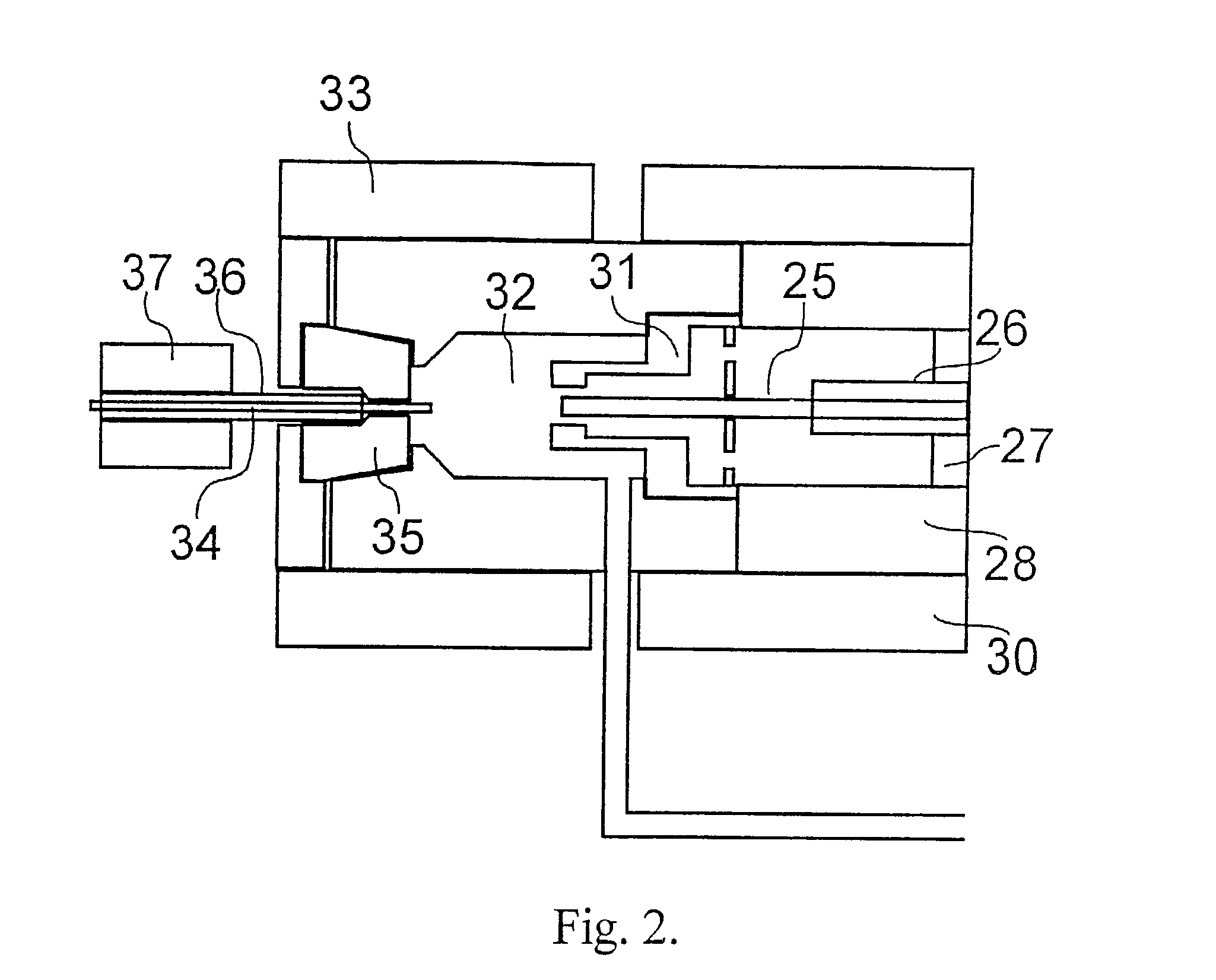Mass spectrometer method and apparatus for analyzing a sample in a solution
- Summary
- Abstract
- Description
- Claims
- Application Information
AI Technical Summary
Benefits of technology
Problems solved by technology
Method used
Image
Examples
Embodiment Construction
[0047]Shown in FIG. 1 is a schematic diagram of a mass spectrometric apparatus according to the present invention, based on supersonic molecular beams and aimed at the analysis of thermally labile sample compounds in solutions. The sample is introduced into the injection system; it can be injected from an injection loop directly to the liquid transfer line, or through a liquid chromatography (LC) column for the separation of the sample compounds in time. The liquid is pumped through the injection system 1, LC column 4 and transfer line 3 by an LC pump 5, which pumps one or a few solvents from the solvent containers 6. The same mass spectrometer apparatus can also accept samples for analysis from a gas chromatograph 7, whose gas flows around or along the liquid sample transfer line 3 in a gas tube 8 that can be coaxial with the liquid transfer line 3. A nebulizing gas, typically helium or hydrogen, is provided via a flow control valve 9 and flows in the coaxial gas tube 8. A further ...
PUM
 Login to View More
Login to View More Abstract
Description
Claims
Application Information
 Login to View More
Login to View More - R&D
- Intellectual Property
- Life Sciences
- Materials
- Tech Scout
- Unparalleled Data Quality
- Higher Quality Content
- 60% Fewer Hallucinations
Browse by: Latest US Patents, China's latest patents, Technical Efficacy Thesaurus, Application Domain, Technology Topic, Popular Technical Reports.
© 2025 PatSnap. All rights reserved.Legal|Privacy policy|Modern Slavery Act Transparency Statement|Sitemap|About US| Contact US: help@patsnap.com



